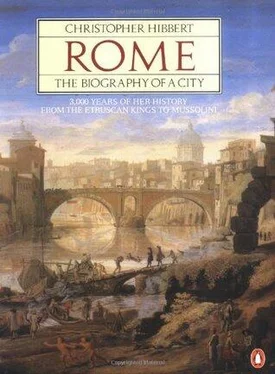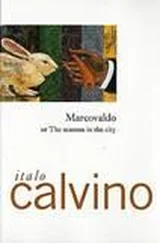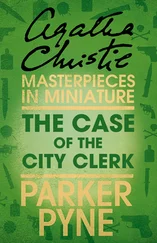Christopher Hibbert - Rome. The Biography of the City
Здесь есть возможность читать онлайн «Christopher Hibbert - Rome. The Biography of the City» весь текст электронной книги совершенно бесплатно (целиком полную версию без сокращений). В некоторых случаях можно слушать аудио, скачать через торрент в формате fb2 и присутствует краткое содержание. Жанр: Культурология, Искусство и Дизайн, на английском языке. Описание произведения, (предисловие) а так же отзывы посетителей доступны на портале библиотеки ЛибКат.
- Название:Rome. The Biography of the City
- Автор:
- Жанр:
- Год:неизвестен
- ISBN:нет данных
- Рейтинг книги:3 / 5. Голосов: 1
-
Избранное:Добавить в избранное
- Отзывы:
-
Ваша оценка:
- 60
- 1
- 2
- 3
- 4
- 5
Rome. The Biography of the City: краткое содержание, описание и аннотация
Предлагаем к чтению аннотацию, описание, краткое содержание или предисловие (зависит от того, что написал сам автор книги «Rome. The Biography of the City»). Если вы не нашли необходимую информацию о книге — напишите в комментариях, мы постараемся отыскать её.
Rome. The Biography of the City — читать онлайн бесплатно полную книгу (весь текст) целиком
Ниже представлен текст книги, разбитый по страницам. Система сохранения места последней прочитанной страницы, позволяет с удобством читать онлайн бесплатно книгу «Rome. The Biography of the City», без необходимости каждый раз заново искать на чём Вы остановились. Поставьте закладку, и сможете в любой момент перейти на страницу, на которой закончили чтение.
Интервал:
Закладка:
Among the bodies of saints placed here were, it is believed, that of St Sebastian, traditionally said to be a member of Diocletian's bodyguard who was condemned to be shot to death with arrows when his religion became known, and, for a time, those of two earlier saints, Paul, the great Jewish missionary from the Greek city of Tarsus, and Simon, the fisherman from the shores of the Sea of Galilee whose Aramaic title Kepha (Peter), meaning rock, was given to him by Christ himself with the words, ‘And on this rock I will build my Church, and the powers of death shall not prevail against it. I will give you the keys of the kingdom of heaven.’ In fulfilment of this mission Peter is believed to have come to Rome where both he and Paul were executed in the persecutions ordered by Nero.
These persecutions followed the fire of 64 for which the Emperor himself was widely held to be responsible and for which scapegoats were consequently needed.
To put an end to the rumours he shifted the charge on to others [Tacitus recorded]. First those who acknowledged themselves of the [Christian] persuasion were arrested; and upon their testimony a vast number were condemned… Their death was turned into a diversion. They were clothed in the dress of wild beasts, and torn to pieces by wild dogs; they were fastened to crosses, or set up to be burned, so as to serve the purpose of lamps when daylight failed. Nero gave up his own gardens for this spectacle.
As it was in Nero's time, so it was in the reigns of Domitian and Marcus Aurelius, of Decius and Valerian. There were emperors who were more merciful. Trajan, for instance, ordered, ‘Christians are not to be hunted out. Any who are accused and convicted must be punished. Yet if a man denies being a Christian and corroborates his denial by such acts as worshipping our gods, he should be pardoned, however suspect he may have been in the past.’ But throughout the second and third centuries the Christians were more often persecuted than not; and, even when the authorities were prepared to tolerate them, the common people suspicious of their exclusiveness, their rites and their supposed ‘abominations’ which included cannibalism – regarded them as alien troublemakers and revolutionaries, a danger to the state and a blasphemy against the ancient gods of Rome. Their deaths in the amphitheatre accordingly became one of the fiercest thrills that the shows there could afford. Christians were eaten by half-starved lions, burned alive before images of the sun-god, shot down by flights of arrows, hacked to death with axes and swords. In the reign of Diocletian alone, when the congregation of Christians was forbidden, when their clergy were arrested unless they sacrificed to the recognized gods, and their places of worship destroyed together with their sacred objects and holy books, there were probably as many as three thousand martyrs. Yet their religion could not be suppressed; and while those arrested were torn to pieces in the Colosseum, the survivors were joined by convert after convert until by the time of Diocletian's death there were perhaps thirty thousand Christians in Rome, meeting together for worship, occasionally in halls reserved especially for the purpose but usually in villas or ‘houses of the Church’ known as tituli after the original title holders of the building.
By then there had already been thirty-three bishops, or popes, in Rome, all holding that position of divine, unique authority within the Christian community which, so they believed, had been granted to St Peter by Christ. A minority of them had been born in Rome; several came from the East; one at least from Africa. Some were of humble birth, others noblemen. This evident capacity of Christianity to attract converts from all peoples and classes in the Empire was one of the main reasons why it appealed to the man who emerged as the strongest contender for the imperial throne after the confusion caused by the abdication of Diocletian.
This man was Constantine. The son of an army officer and an experienced officer himself, Constantine had been born in about 285 in what is now Yugoslavia and had spent most of his youth in the eastern part of the Empire which Diocletian had divided to protect its borders. His mother, Helena, a former serving-girl from Asia Minor, was at some uncertain date converted to Christianity and, on a visit to the Holy Land, was credited with having discovered the cross upon which Christ was crucified. Her son, so it was alleged, had the nails melted down and made into a charmed bit for the bridle of his horse. Having married the stepdaughter of one of Diocletian's fellow-Emperors, Maximian I, Constantine had invaded Italy in 312 and at the Mulvian Bridge near Rome had defeated his brother-in-law, Maxentius, Maximian's son, to become undisputed ruler of the Empire in the West. At this battle he had fought under a banner bearing the insignia of the faith to which he had been converted from sun-worship and to which he was drawn not only by political considerations but also by his own need for a personal, divine intercessor. Thereafter, in those battles in which he won and consolidated his rule over the whole of the Empire, East and West, he claimed to be fighting in Jesus's name and to be the champion of His faith against the forces of evil. By imperial edicts he granted freedom of worship to all Christians and restored to them the property, both personal and corporate, of which they had been deprived during the persecutions.
In Rome, Constantine contrived to benefit the Christian community without giving too much offence to the rich and influential classes who were still mostly, and in many cases devoutly, pagan. He gave the Christians buildings in which they could meet and worship their God, bury their dead and revere their saints and martyrs. But he ensured that the sites were well away from the centre of the city and that, while the interiors of the buildings might be splendid, they displayed little of this splendour to the passers-by in the streets outside.
South-west of the Porta Maggiore 2stood a palace which had formerly belonged to the rich Laterani family and which had formed part of his wife's dowry. 3This he gave to the Pope who established in it the surviving private chapel, the Sancta Sanctorum, 4now approached by the Scala Sancta, the holy stairs which, so tradition firmly held, Jesus ascended in Pontius Pilate's palace in Jerusalem and which were brought to Rome by Constantine's mother. 5Helena, as Empress-Dowager, had a palace near to the Lateran, the Palatium Sessorianum; and here the great hall was converted into a basilica which became known as S. Croce in Gerusalemme in commemoration of the holy Cross, its most precious relic. 6North of S. Croce in Gerusalemme, Constantine himself is believed to have built a basilica, the first Basilica di S. Lorenzo fuori le Mura. 7This was constructed over the catacomb where lay the bones of St Laurence, one of the deacons of the early Christian community in Rome. St Laurence, it is said, was burnt to death on a grill in 258 when, having been ordered to hand over the sect's valuables, he collected together the city's destitute and sick and presented them to the authorities with the words, ‘Here is the Church's treasure.’ Certainly, beside the Lateran Palace on the site of what is now St John Lateran, Constantine did build the Constantinian basilica which, since it contained the cathedra , or official seat of the bishop, became and has always since remained Rome's cathedral. 8A large rectangular hall with a nave flanked by double aisles and terminating in an apse, this basilica seems to have been conceived by Constantine, internally at least, as a splendid Christian rival to the monumental public meeting-halls of the imperial city.
The same inspiration is evident also in the other great basilica which Constantine built on the slopes of an imperial estate on the Vatican hill. This basilica was as massive as the Constantinian basilica; but between the apse and the nave, which was covered with graves, a transept changed the longitudinal shape into that of a cross. Beneath this crossing, surmounted by a baldacchino supported on twisted marble columns, was the shrine of St Peter whose remains, brought here from the catacombs, were reburied in the basilica which was for ever to bear his name. 9At about the same time, above the catacombs, yet another large basilica was built as a kind of enclosed and roofed-in cemetery, its floor, like that of St Peter's, covered with graves. Dedicated to the Apostles, it was later known as the Basilica of San Sebastian in honour of the Christian soldier who, his body pierced by arrow shafts, survived death only to be executed. 10
Читать дальшеИнтервал:
Закладка:
Похожие книги на «Rome. The Biography of the City»
Представляем Вашему вниманию похожие книги на «Rome. The Biography of the City» списком для выбора. Мы отобрали схожую по названию и смыслу литературу в надежде предоставить читателям больше вариантов отыскать новые, интересные, ещё непрочитанные произведения.
Обсуждение, отзывы о книге «Rome. The Biography of the City» и просто собственные мнения читателей. Оставьте ваши комментарии, напишите, что Вы думаете о произведении, его смысле или главных героях. Укажите что конкретно понравилось, а что нет, и почему Вы так считаете.












